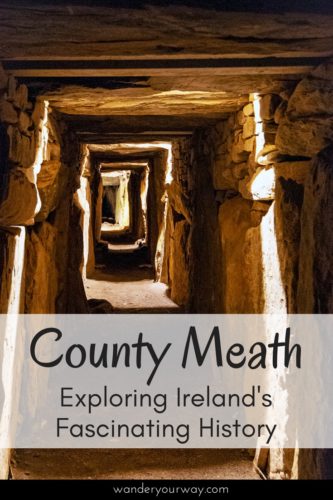County Meath is just an hour or so away from Dublin.
But it’s worlds apart — in so many ways.
This is what the Irish Tourism Board is calling “Ireland’s Ancient East.”
And it’s a fabulous campaign because this part of Ireland is loaded with historical sites — especially ancient ones.
Are you into history?
Then let’s delve into this intriguing county in Eastern Ireland.
The landscape of County Meath
First a note about the landscape in Meath.
It’s very pastoral with flat fields and rolling hills dotted with cows and some sheep. There are definitely more cows here than Connemara!
And there are fields with crops.
It’s far more fertile here.
Though the scenery is not as dramatic as Kerry or Cork or Connemara, it is still beautiful.
There’s a softness to the landscape.
And the roads are all kinds of rural roller coaster fun to drive on.
Okay.
So the sites…
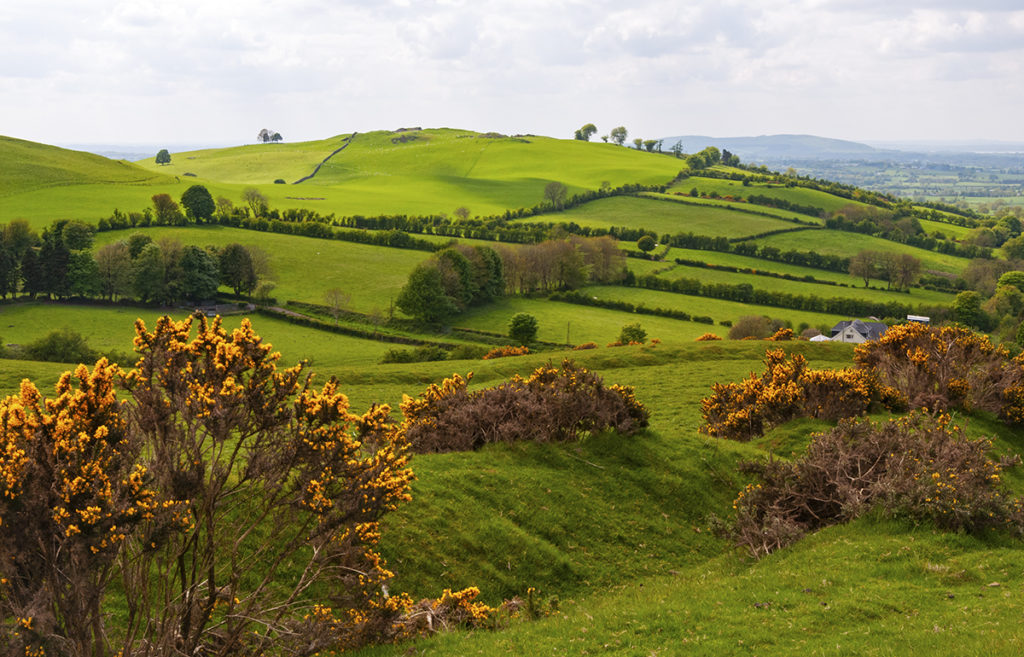
The landscape near Loughcrew Cairns. Hilly, green and lovely!
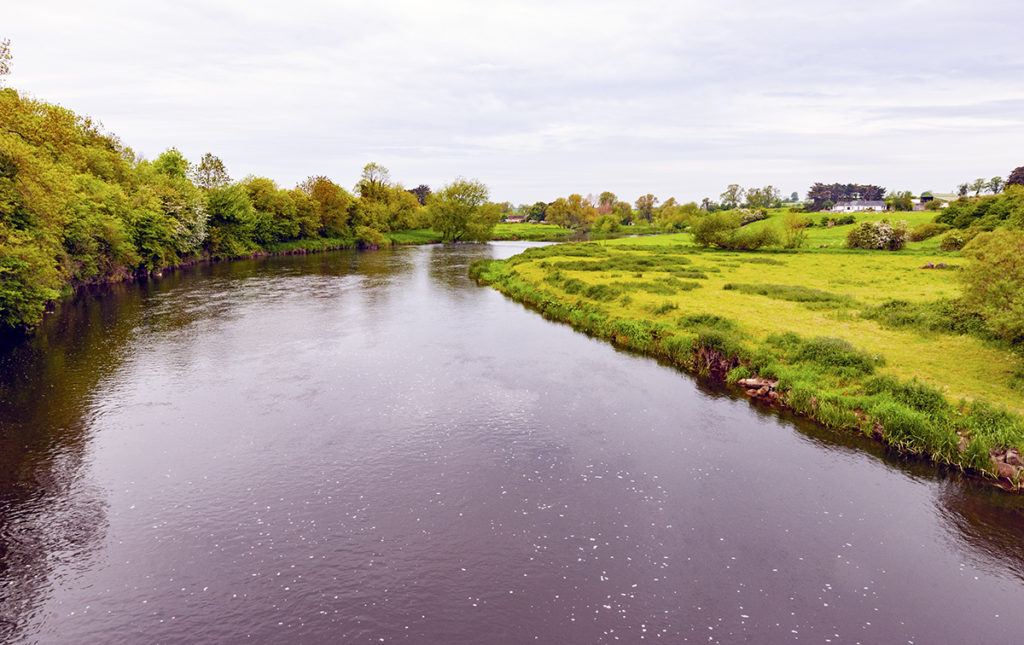
The River Boyne near Newgrange and Knowth. Beautiful!
Castles
There are quite a few castles around.
Trim — where Braveheart was filmed — and Slane are 2 of the major ones.
I’m not an huge Irish castle visitor because the Irish weren’t the ones living there. The English were — lording over the Irish. So I guess I just don’t get into the castles in Ireland as much as the other historical sites.
But there are some fabulous castles in County Meath so you’ll want to check them out if that’s your thing.
I did, however, visit the new Slane Distillery which uses the stable areas of the castle for its whiskey making.
And I did see the castle from across the way. It looks gorgeous and some folks on my distillery tour did say it is quite nice.
So put that one on your list if you’re a castle fan.
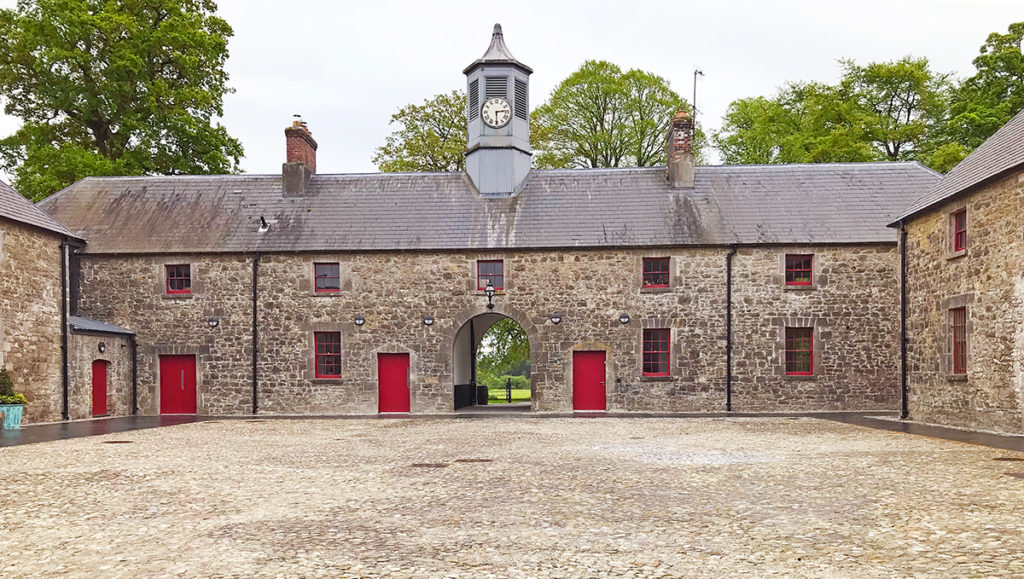
The stables at Slane Castle that are now part of the Distillery.
Newgrange
This is the most popular ancient site in County Meath.
And it’s still one of my favorites.
Located in the Brú na Bóinne or Boyne Valley Tombs this is one of a few must see sites in this area of County Meath.
I’ve been to Newgrange twice so I skipped it on this trip — but I kind of wish I hadn’t as I would have loved to have seen it again.
Newgrange is a passage tomb that is lined up for winter solstice sunrise.
And the tours are really cool as the guides are great at painting a picture of what life might have been like back in 3000BC.
The winter solstice sunrise re-creation is amazing.
Seriously, don’t miss this.
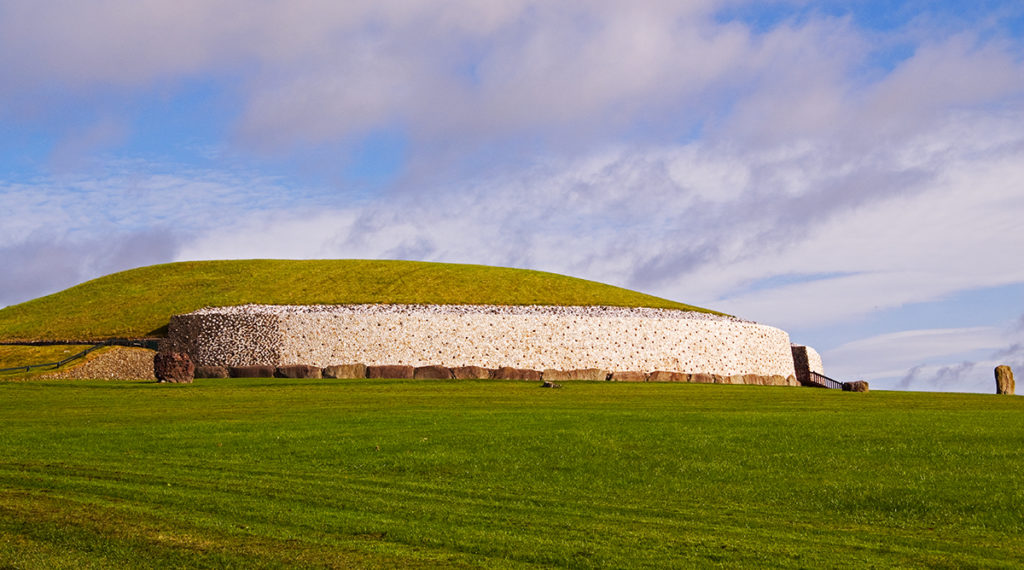
Newgrange — one of the best ancient sites in Ireland.
Knowth
This is one of 2 partners to Newgrange with Dowth being the other. Dowth is not open to visitors due to its instability.
But Knowth is open to an extent.
It’s another passage tomb that is continually being excavated.
There is one main “mound” at Knowth like you see at Newgrange.
But it also has 18 smaller “satellite” mounds around it.
And there are 2 entrances and 2 separate passageways that lead to chambers.
However these 2 don’t actually meet.
One faces East and one faces West.
The East is thought to line up with sunrise on the Vernal and Autumnal Equinoxes.
And the West is believed to align with sunset on these days.
There is some dispute that it could be something a bit more involved such as the relationship between solar and lunar cycles.
But naturally, since Knowth is also 5000 years old, it’s hard to know the exact intent of the ancient people who built and used these structures.
Knowth has some big stones with some incredible art carved on them. And to me, this is the best thing about Knowth.
The bad part is you don’t get to go inside the passages as they are quite small and I believe just not stable enough to allow visitors.
You can take a peek down the eastern passageway and it looks very cool.
My advice is to see both — Knowth for the art and all the mounds and Newgrange to experience the passage chamber and its lighting up.
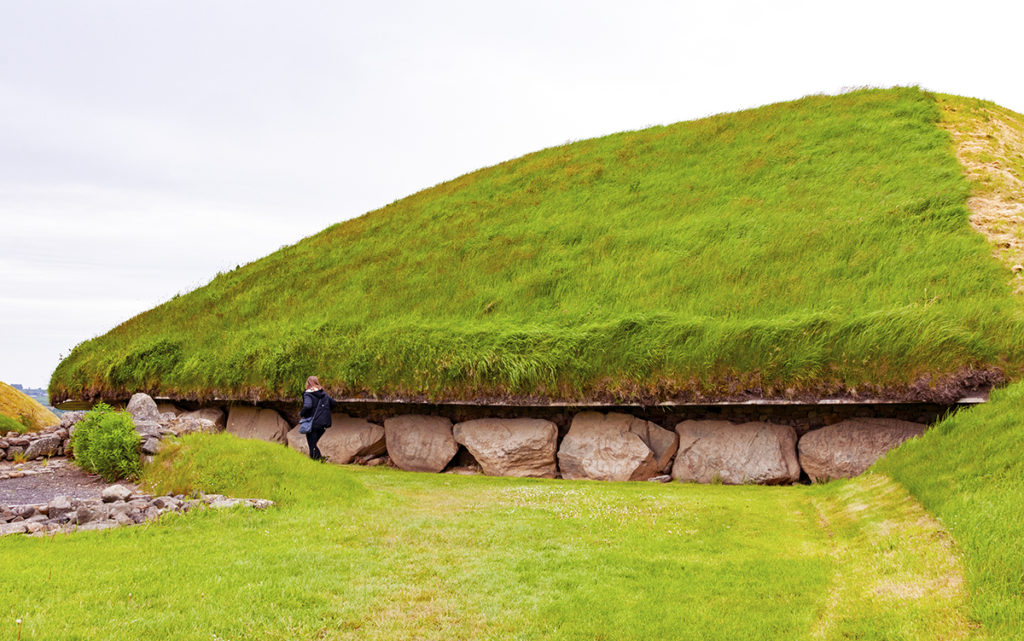
The main mound of Knowth. Notice the large rocks and the artwork on them.
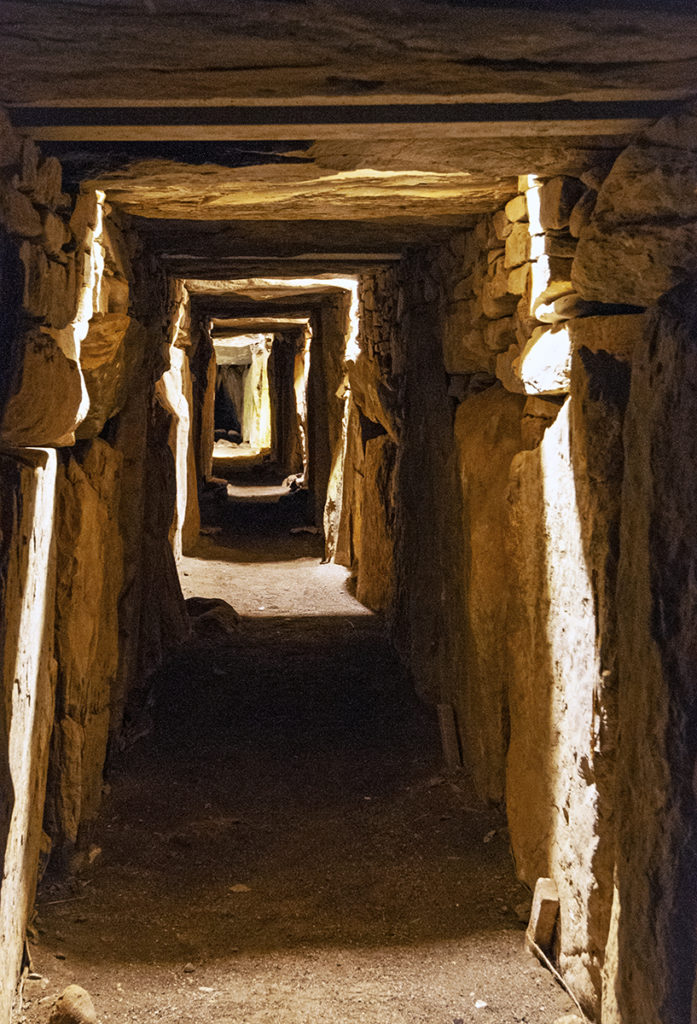
This is the East passage of Knowth that you can look down but, unfortunately, can’t walk into.
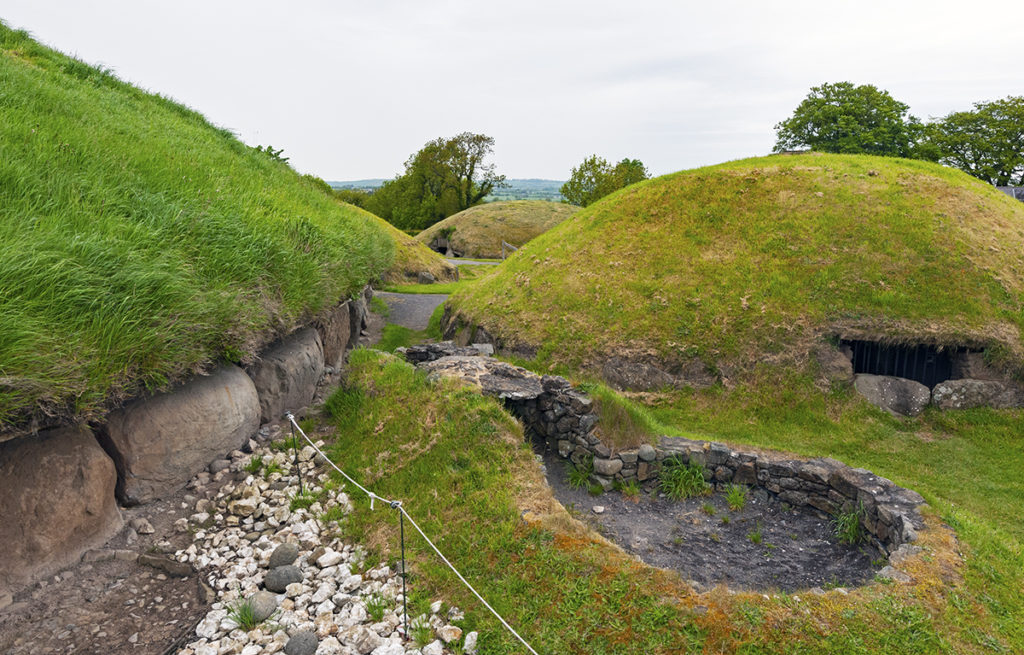
The main mound of Knowth with a couple of the satellite mounds. Very cool!
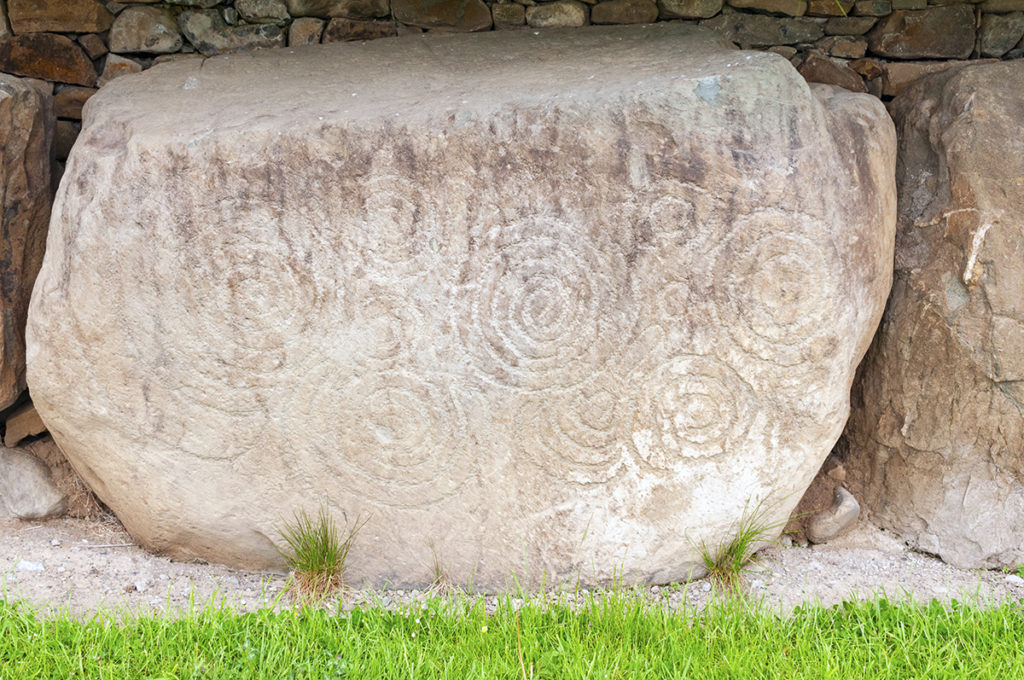
Artwork on a boulder at Knowth. Love this!
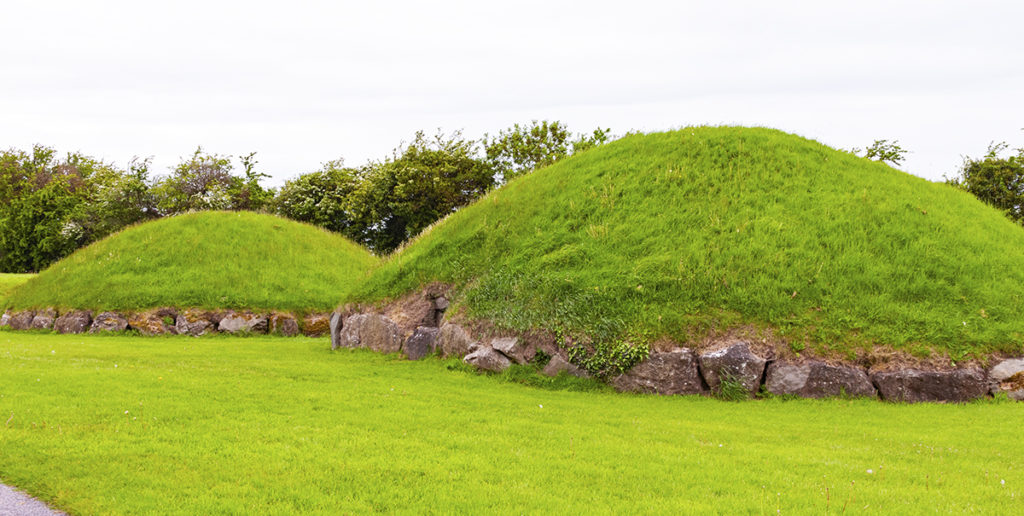
A couple of the satellite mounds of Knowth.
Loughcrew Cairns
I stumbled upon this site in County Meath through some research on ancient sites in Ireland.
As I read about it and saw images of it I knew it was a must for this trip.
Loughcrew is located just a bit west of the town of Kells so it’s in the oppostie direction from the Boyne Valley sites (Newgrange, Knowth, the Hill of Tara).
But make the trip here as it’s a marvelous site and the views are fabulous.
There are actually a few different cairns or tombs here as well with one group called Carnbane East and one called Carnbane West which I believe may not be accessible due to the landowner not allowing it.
Anyway…
Cairn T is the one to visit and it’s located in the Carnbane East group.
If you go to the Loughcrew Estate coffee shop — just a short drive from Cairn T — you can pick up the key to the gated entrance to this passage tomb.
I didn’t do this but would on my next visit and would recommend it to you.
What I did is make the walk up the steep hill to Cairn T and it’s surrounding smaller cairns.
It’s quite impressive.
This passage tomb lines up with sunrise on the equinoxes — and it’s actually a bit older than Newgrange — and you won’t have to pay to visit it or wait in lines.
I have to admit that it’s my favorite of the sites I visited in County Meath.
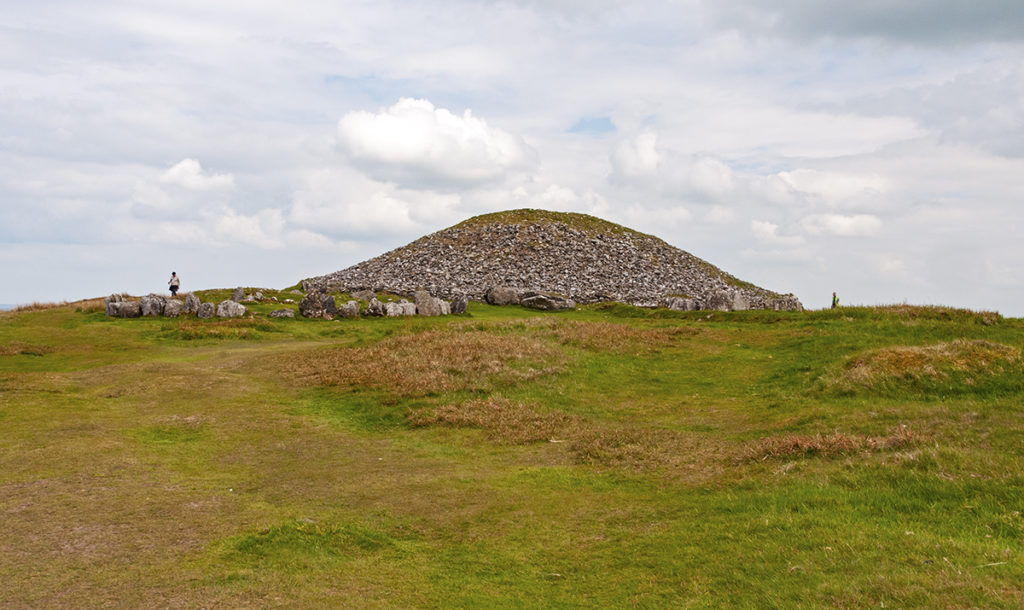
Cairn T of Loughcrew Cairns. I loved this site!
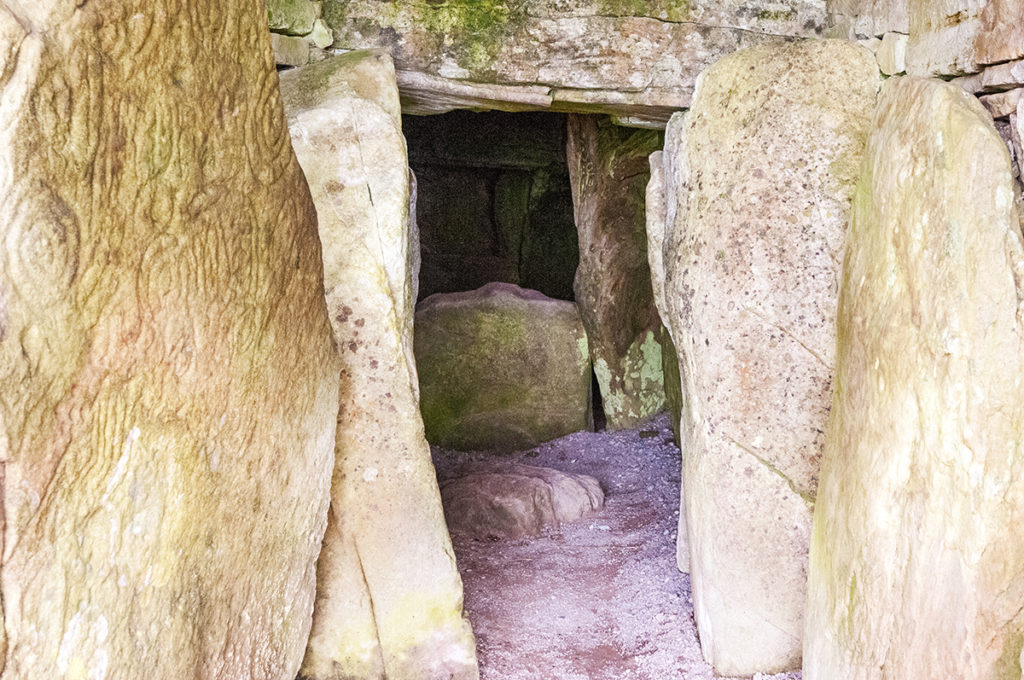
Although I didn’t get the key to go inside Cairn T, I did snap this photo.
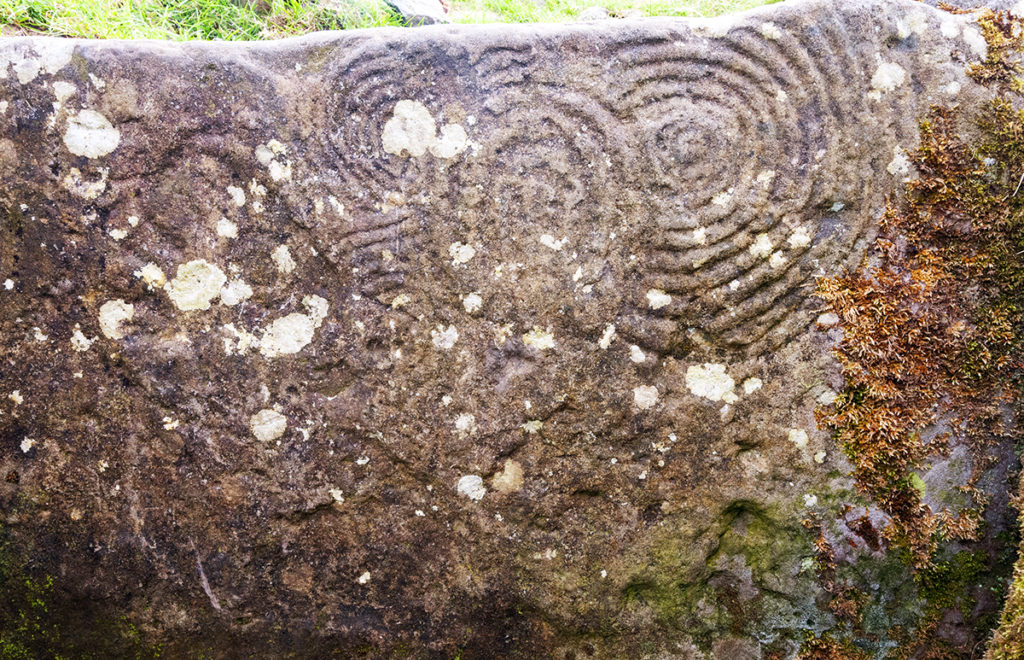
Some artwork at Loughcrew Cairns.
The Hill of Tara
This is the most sacred site in Ireland.
Why this particular spot in County Meath became the seat of the High King is still a mystery but it did.
There is a passage tomb dating back to about 3000BC but it was during the time between 600BC to 400AD that Tara — Teamhair na Rí (meaning sanctuary of the Kings) — was at its height.
You see, this is where the Irish Kings (yes, there were many of them as there were many tribes) would meet. They would settle disputes, have festivals and commune with Meave, the Earth Mother Goddess. The High King was the one whose “seat” was Tara.
The Lia Fáil — Stone of Destiny — determined the rightful High King by crying out when a true king placed his foot on it. I love these stories!
This stone still sits at this site. Okay, it’s a replica as the original in in Edinburgh.
Anyway…
For some reason this place in County Meath is where these ancient folks believed the gods lived. As a result it became the most sacred place.
And it was here that a big celebration occurred at the end of the harvest — probably around our modern day Halloween.
St Patrick is said to have come here to meet with the High King at the time to get him to convert to Christianity — which eventually did happen.
The thing with the Hill of Tara is that nothing much exists except mounds and indentations so you really have to use your imagination.
And for the locals, like my waitress at the StockHouse in Trim, it’s just a place to go take a walk with your family or to walk your dog.
They don’t see it as the sacred place it is — or if they do it’s just kind of ‘there’.
I took my time and walked around it and really tried to imagine it for what it was back in 400BC.
So if you really like these ancient sites, allow enough time to really walk every piece of it because it’s really special.
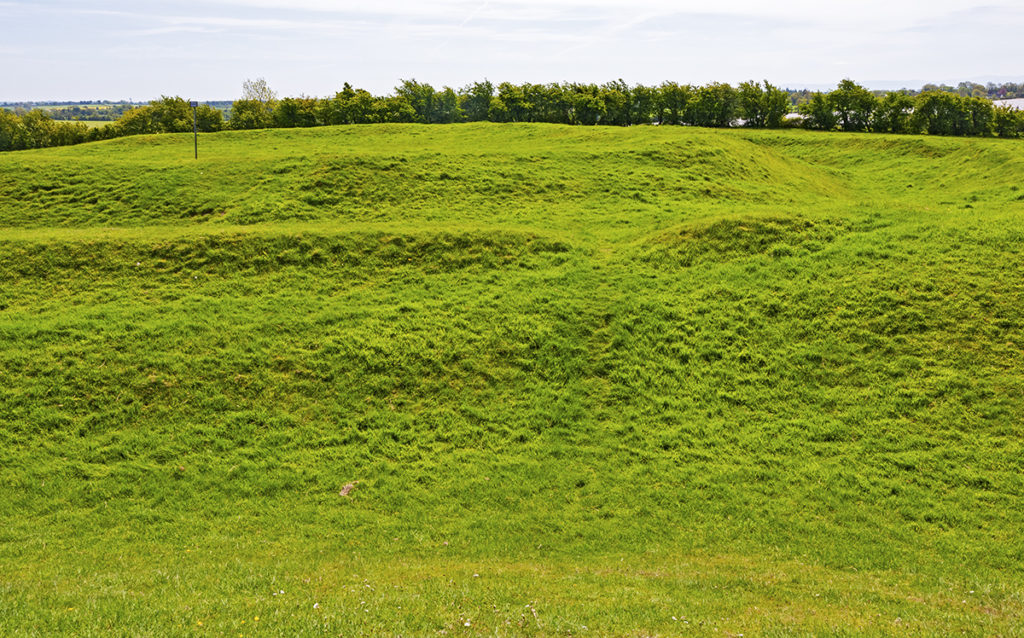
The bumps and indentations of the Hill of Tara. Time to put your imagination to work!
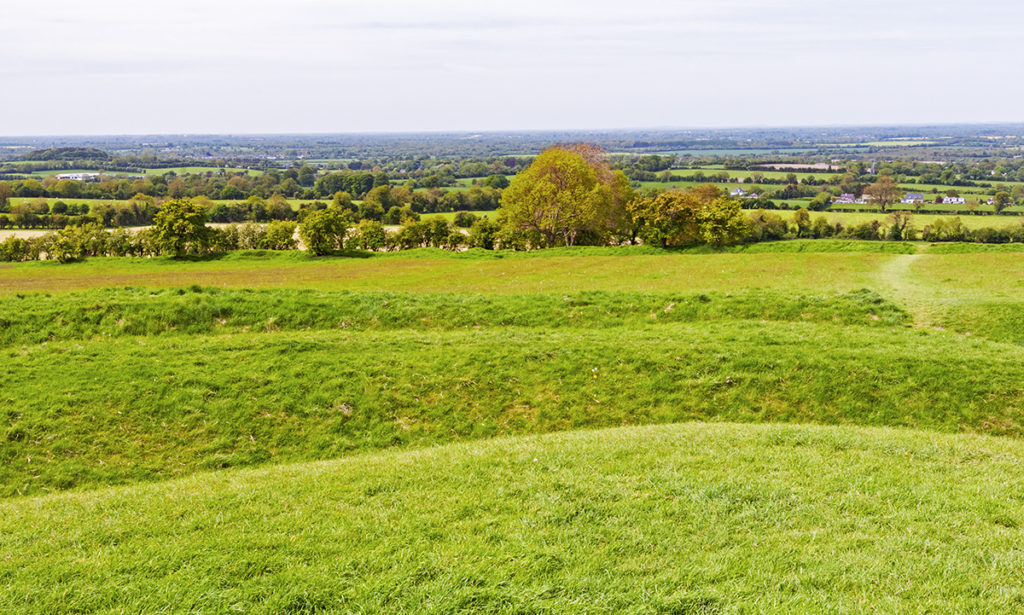
The bumps and indentations of the Hill of Tara.
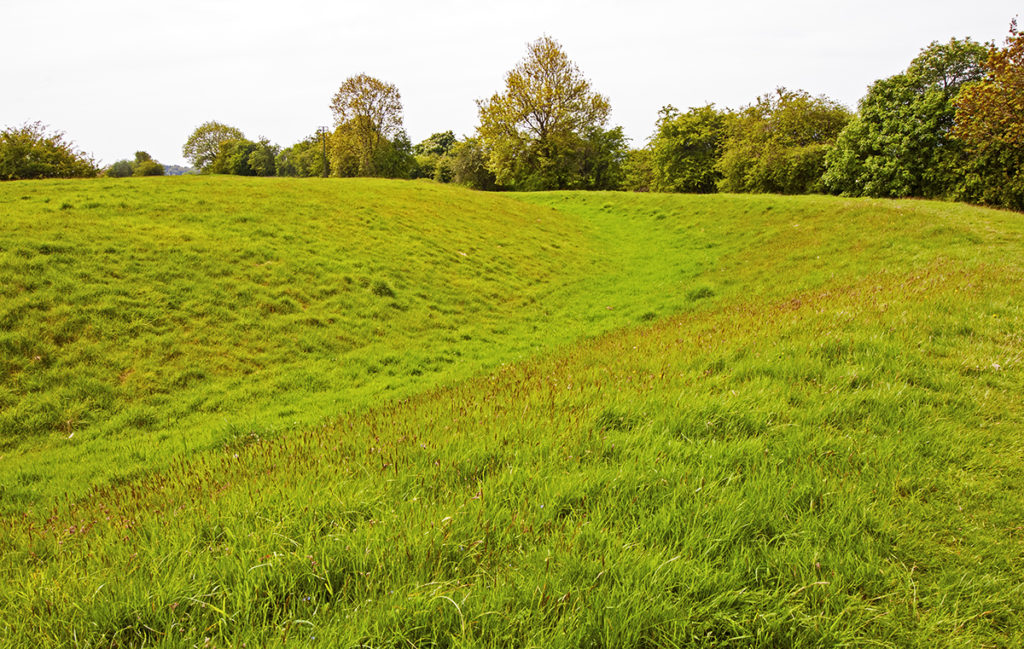
The bumps and indentations of the Hill of Tara.
More sites
County Meath has more historical sites.
There are places such as the Hill of Slane, Beactive Abbey and the Kells Monastic site.
It’s a destination worthy of a few days to take it all in so don’t just stop by.
Stay.
And learn a bit more about Ireland’s fascinating history.
